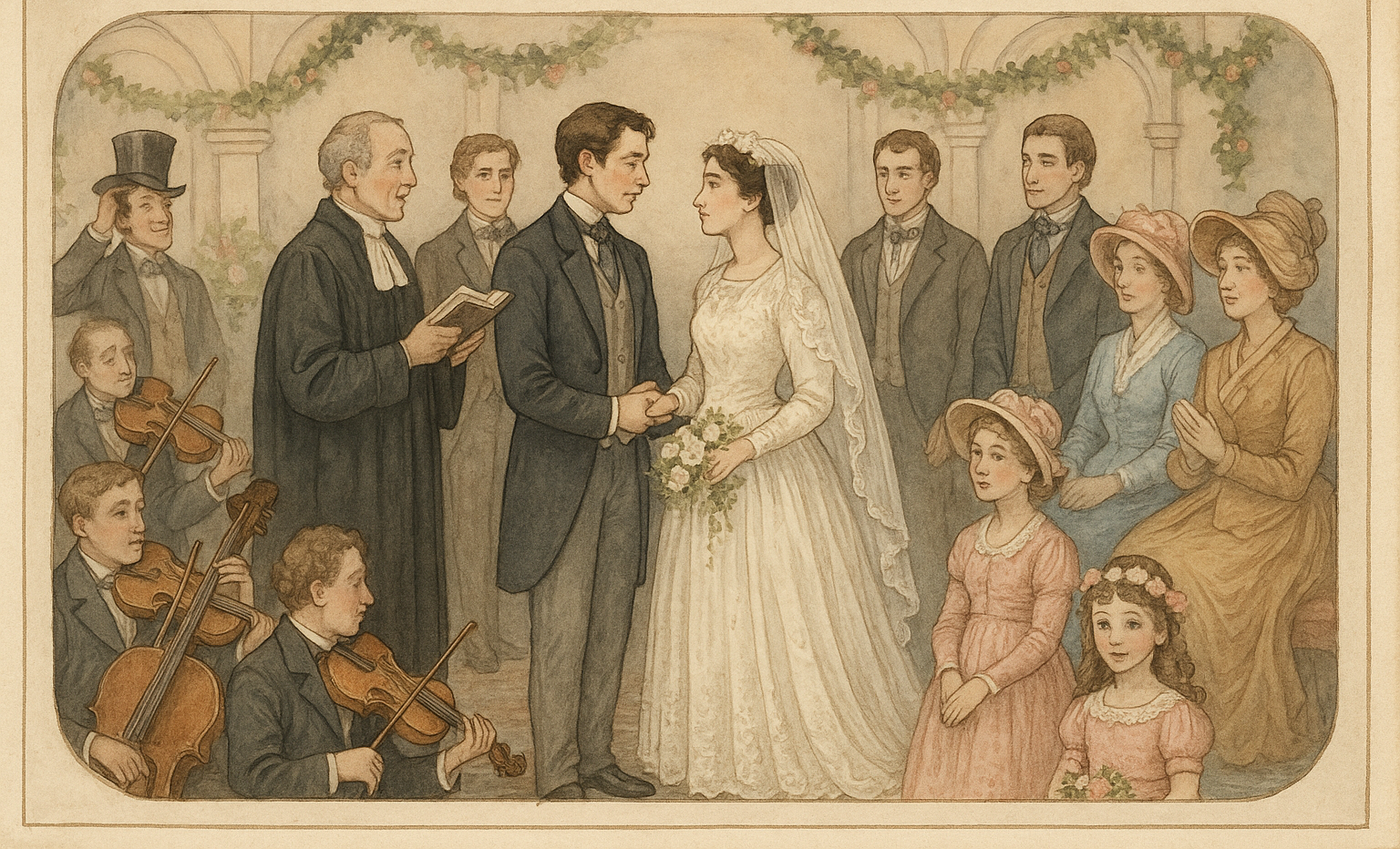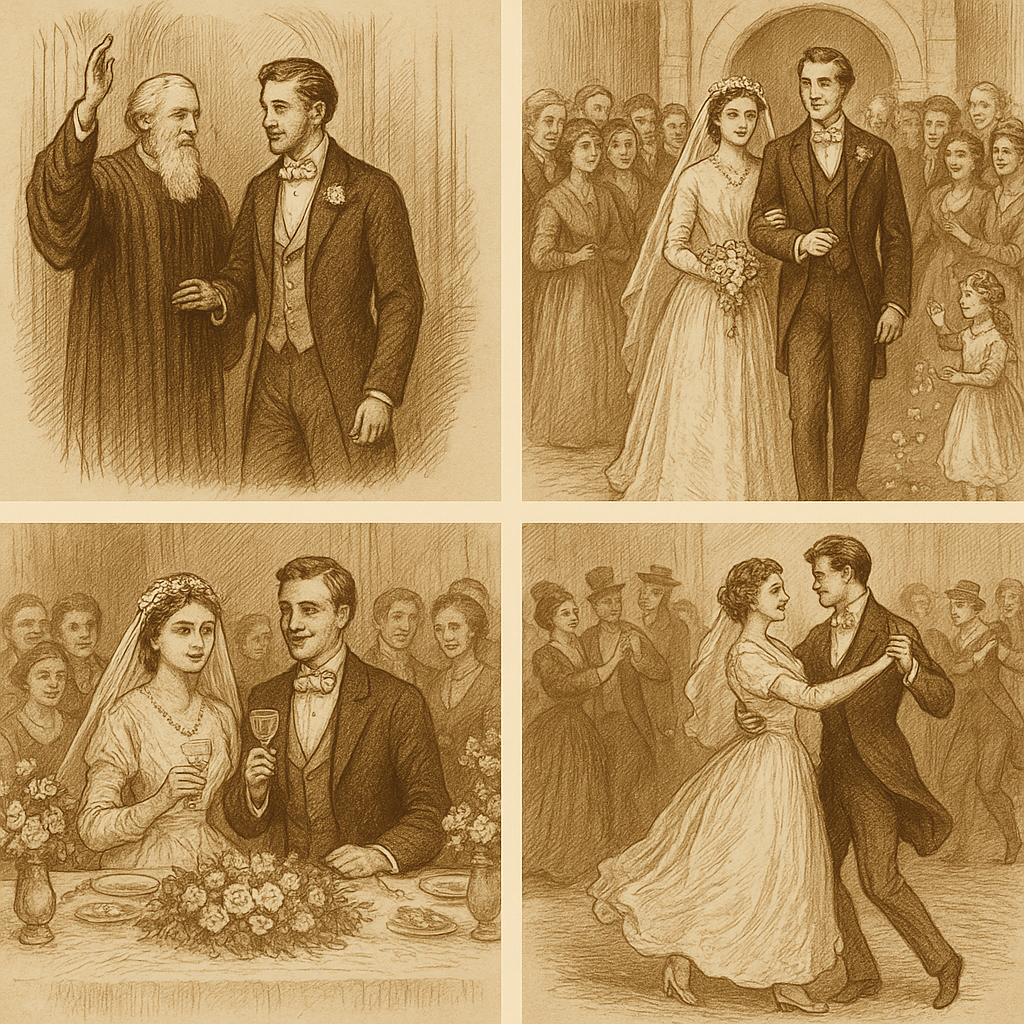“How to Celebrate a Victorian Wedding: Reviving the Elegance and Traditions of the 19th Century”

Victorian weddings, spanning the reign of Queen Victoria from 1837 to 1901, are renowned for their rich traditions, intricate ceremonies, and iconic fashions that continue to inspire modern couples. Queen Victoria herself popularized the white wedding dress, influencing bridal customs worldwide. Celebrating a Victorian wedding today means embracing a blend of formality, symbolism, and heartfelt rituals that marked this era. Whether you’re planning a themed wedding or simply wish to incorporate Victorian touches, understanding the history and practices of Victorian weddings can help you recreate the elegance and charm of this golden age of matrimonial celebration.
Historical Context and Importance
Victorian weddings were elaborate social events reflecting the social status, wealth, and values of the couple and their families. The period witnessed significant changes in wedding customs—from attire to ceremonies—as well as the rise of bridal culture with a focus on sentimentality, moral virtue, and family unity.
Queen Victoria’s marriage to Prince Albert in 1840 set many trends: her choice of a white silk dress with lace trim was revolutionary, symbolizing purity and wealth, and quickly became the standard for brides in Britain and beyond.
Key Elements of a Victorian Wedding Celebration
1. The Attire
- Bride: Victorian brides traditionally wore white or ivory dresses made from silk, satin, or lace, often featuring high necklines, long sleeves, and full skirts supported by crinolines or bustles. Accessories included a veil, gloves, and a bouquet of flowers—particularly orange blossoms symbolizing purity and fertility.
- Groom: Grooms wore formal morning dress or tailcoats, often with a top hat and gloves. Their boutonniere typically matched the bride’s bouquet.
- Bridesmaids and Guests: Bridesmaids dressed in modest gowns of pastel shades, with bonnets or floral headpieces. Guests wore their finest formalwear, reflecting the importance of the event.
2. Ceremony Traditions
- Victorian weddings were typically held in churches, with the ceremony following the Anglican rite, emphasizing solemn vows and Christian sacrament.
- The exchange of rings became popular in this era, often crafted from gold and symbolizing eternal love.
- Music played a crucial role, with hymns like “The Voice That Breathed O’er Eden” and “O Perfect Love” commonly sung.
- After the ceremony, a formal procession often took place, with the bride leading to the reception.
3. Wedding Rings and Gifts
- Wedding rings were usually plain gold bands, sometimes inscribed with romantic or religious messages.
- Gifts were practical yet elegant: fine linens, silverware, and household items symbolized the beginning of the couple’s domestic life.
- The tradition of a wedding cake blossomed during the Victorian era, often featuring elaborate designs such as white icing (called “royal icing”) and adorned with sugar flowers and figurines.
4. Reception and Celebration
- The wedding reception was an opportunity for feasting, dancing, and socializing. Victorian receptions could be lavish affairs with multiple courses, fine wines, and entertainment including chamber music and dancing.
- Toasts to the bride and groom were customary, accompanied by speeches praising virtues and wishes for prosperity.
- The couple might depart amid cheers, often in a horse-drawn carriage adorned with ribbons and flowers.

Victorian Wedding Symbols and Customs
- Orange Blossoms: These fragrant flowers were favorites for bridal bouquets and headpieces, symbolizing purity, innocence, and fertility.
- The Veil: Veils symbolized modesty and protection from evil spirits.
- Something Old, New, Borrowed, and Blue: This rhyme originated in the Victorian era, outlining good luck charms for brides.
- Handfasting: Though more ancient, some Victorian weddings included symbolic handfasting ceremonies, binding the hands of the couple with ribbons.
Planning a Victorian Wedding Today: Ideas and Inspirations
- Venue: Choose historic churches, mansions, or gardens that evoke 19th-century charm.
- Attire: Source or tailor vintage-style gowns and suits with authentic fabrics and detailing.
- Invitations: Use calligraphy or engraving on heavy cardstock with floral motifs reminiscent of Victorian design.
- Decor: Incorporate lace, candlelight, vintage silverware, and floral arrangements featuring roses, lilies, and orange blossoms.
- Music: Include classical pieces and Victorian-era hymns or ballads.
- Ceremony: Follow traditional vows or Anglican rites, include the exchange of gold wedding bands, and incorporate rituals like handfasting if desired.
- Reception: Serve Victorian-inspired menus with multiple courses and traditional desserts like fruitcake or blancmange.
- Photography: Use sepia tones or black-and-white to capture the vintage atmosphere.
Challenges and Considerations
Victorian weddings were often long and formal, which may not suit all modern tastes. It’s important to balance historical accuracy with comfort and personal expression.
Budget can also be a factor, as detailed gowns and elaborate décor require investment. However, creative DIY approaches and vintage rentals can offer cost-effective alternatives.
Conclusion
Celebrating a Victorian wedding today is a beautiful way to honor history while creating a timeless and romantic experience. By understanding and incorporating the rich traditions, symbols, and aesthetics of the Victorian era, couples can craft a wedding that is elegant, meaningful, and memorable—reflecting the grace and spirit of a bygone age that continues to inspire.




